[content warning: this blog post contains 2 images of dead birds. If you anticipate this causing you trouble, please stop reading after the image of the American strawberry bush.]
Hi River Roaders,
The best nature studies include humans as an integral part of the environment. This month we’ll take an introspective look at how we are doing at RRUUC at living with nature, including many good things and some bad things. All of these photos were taken on RRUUC grounds this September.
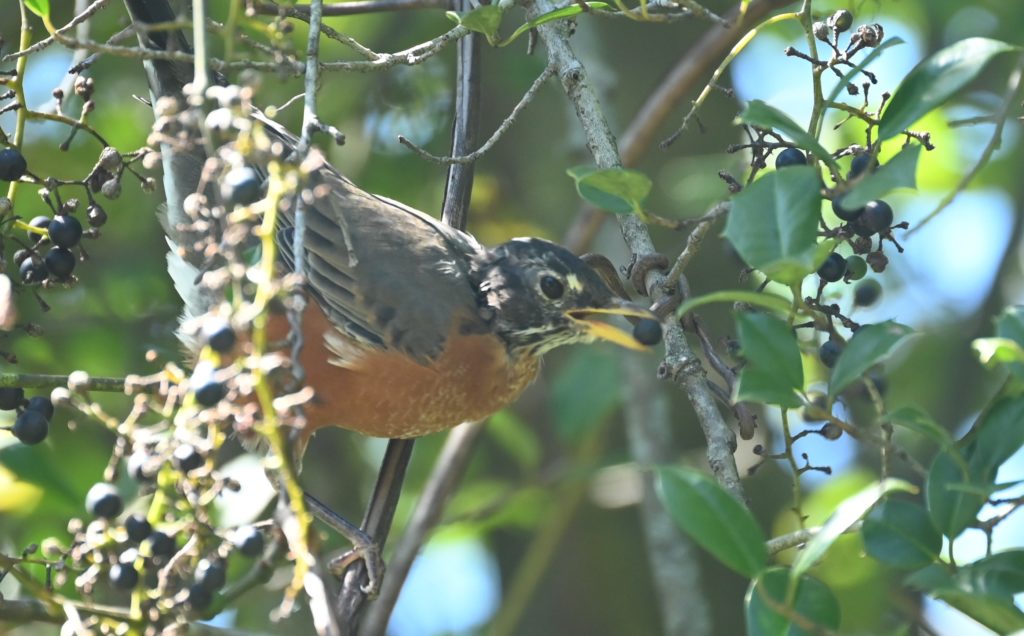
We make a deliberate decision to plant native trees, shrubs and vines that benefit wildlife. Here an American robin is eating native grapes growing outside Room 31 along River Road.
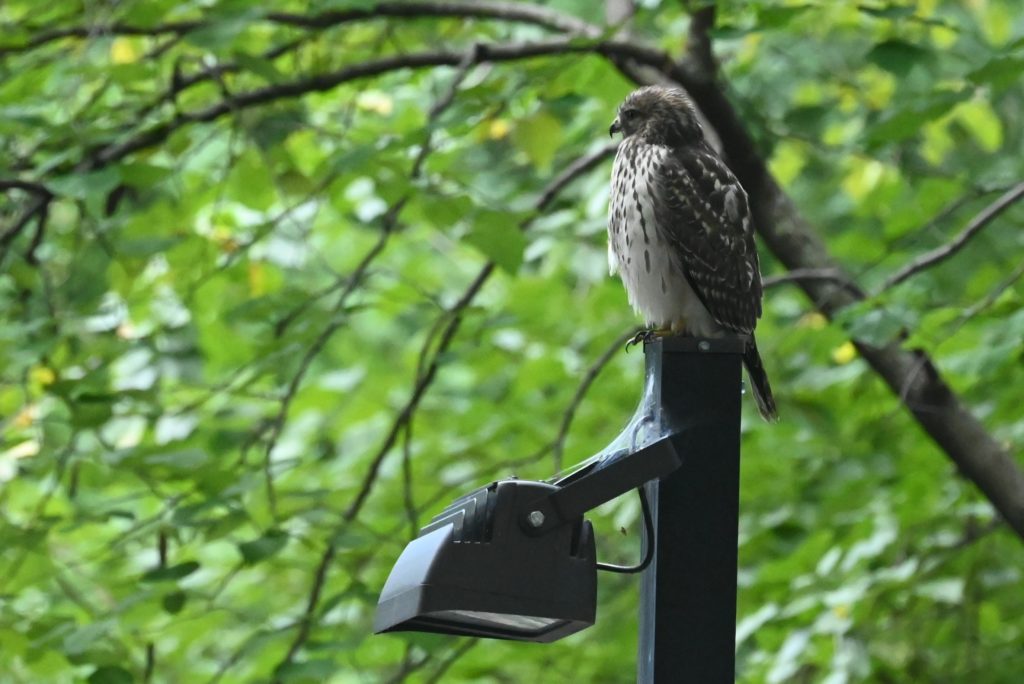
We’ve removed much of the invasive non-native ivy around our front parking areas, making it easier for raptors like this juvenile red-tailed hawk to hunt mice and rodents.
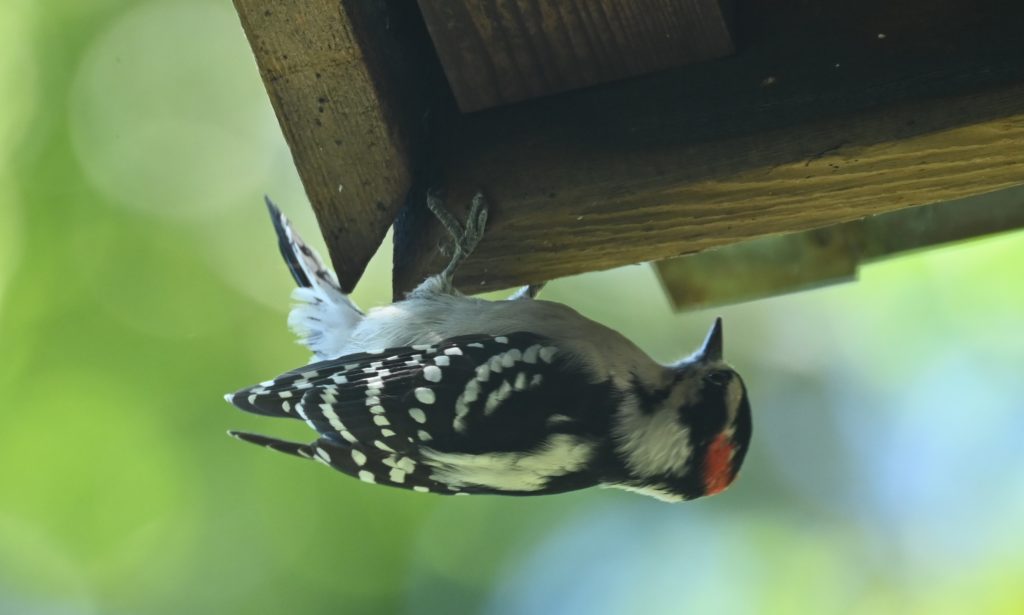
Our resident birds, like this downy woodpecker, are comfortable looking for food around our building.
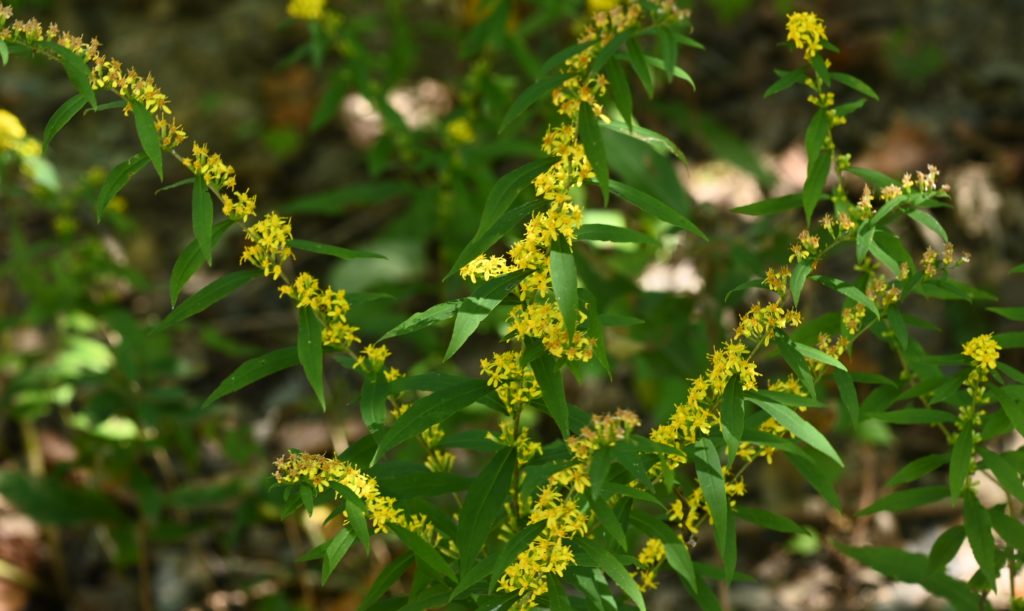
We plant native plants like this bluestem goldenrod that provides nectar into the fall. This goldenrod is common along the Potomac River in our area.
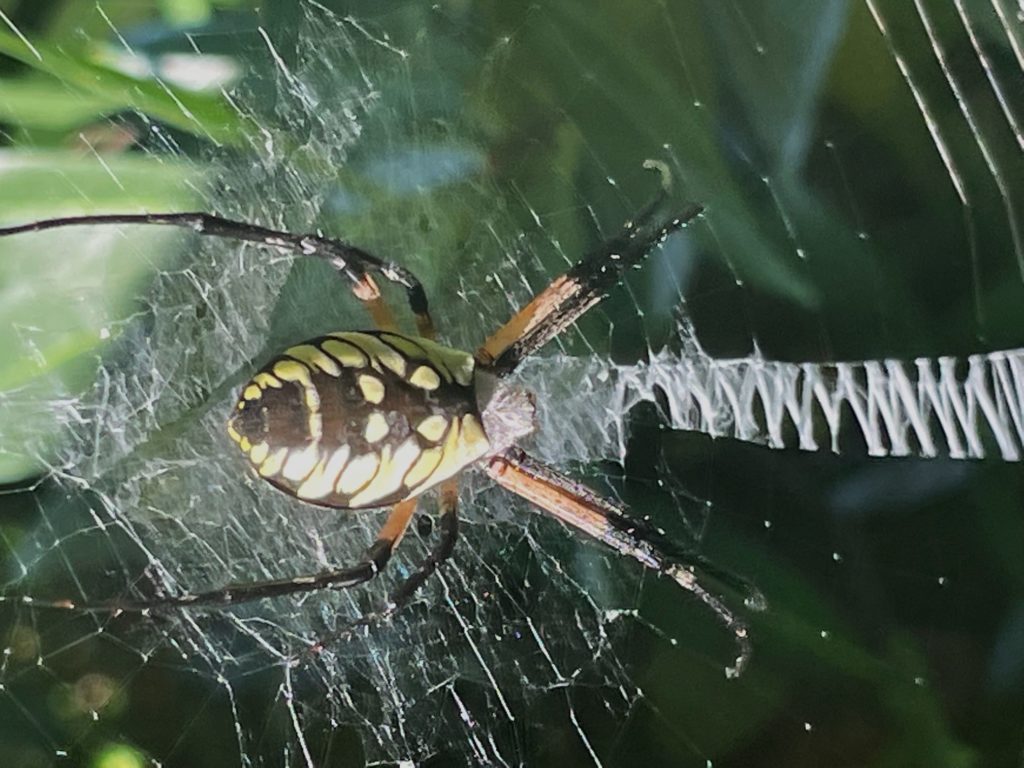
Our native plants attract many insects, which in turn support predators like this yellow garden spider in our Memorial Garden. This harmless (to humans) large spider spins a web that always has a visible band in the middle that is thought to provide a warning to keep birds from flying into the web.
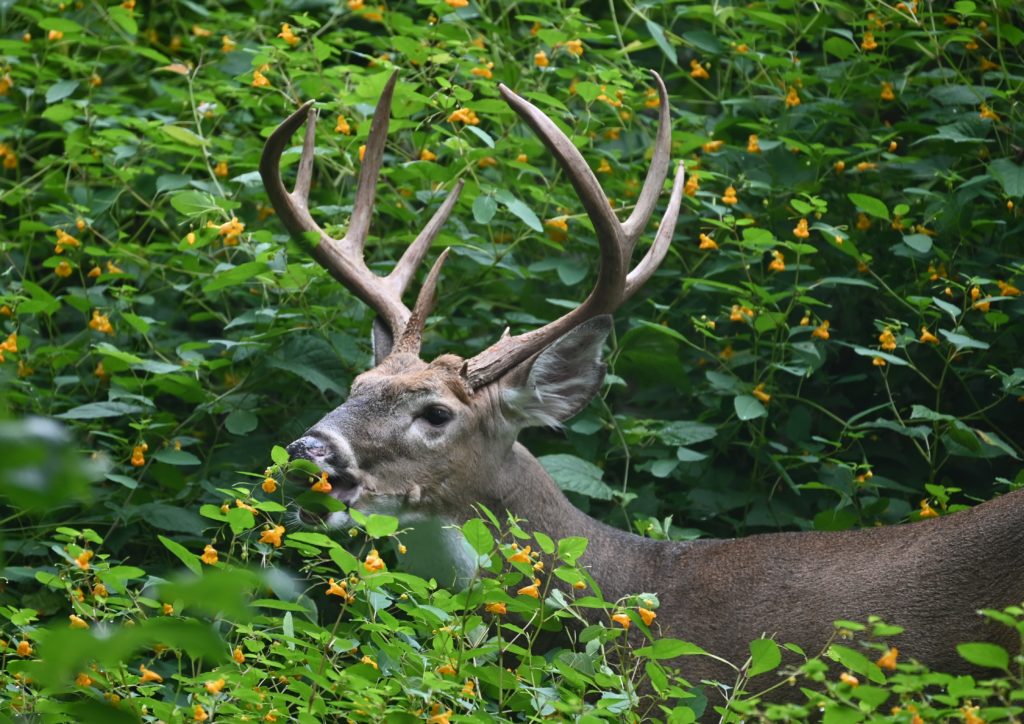
We have more deer in our area than the area can comfortably support. We can’t grow many plants because the deer will browse them to the ground. However, in the last month, the deer have not bothered our plants much because they have been browsing heavily on this orange jewelweed growing on the hillside behind our grounds.
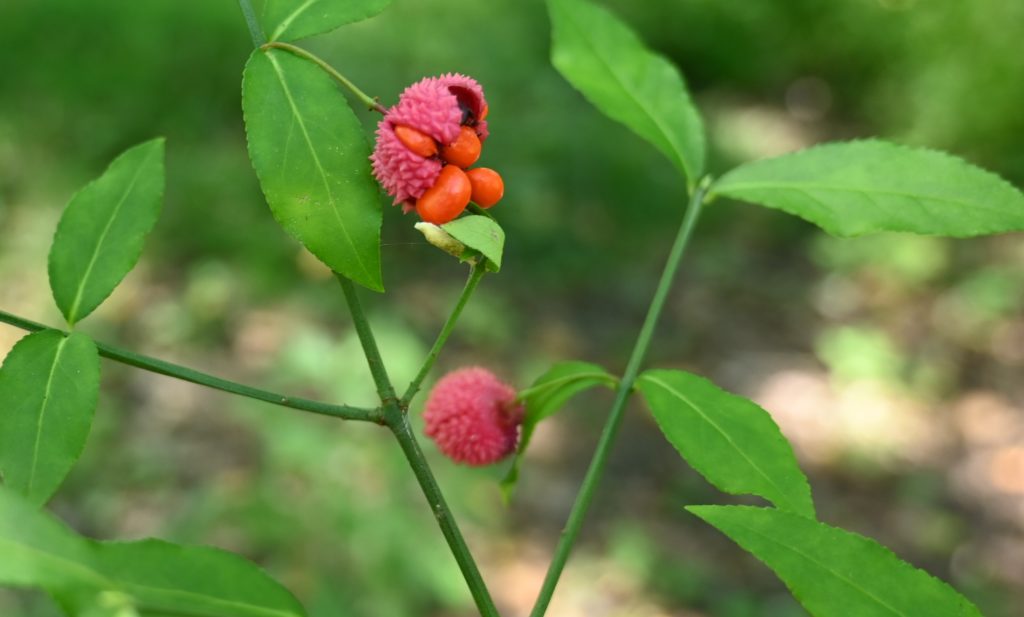
We are trying to restore once-common native plants that have been heavily impacted by deer. We have several of these beautiful Euonymus americanus (American strawberry bush or hearts-a-busting). We will likely have to always keep them enclosed in fencing to protect them from the deer, who really like to eat them.
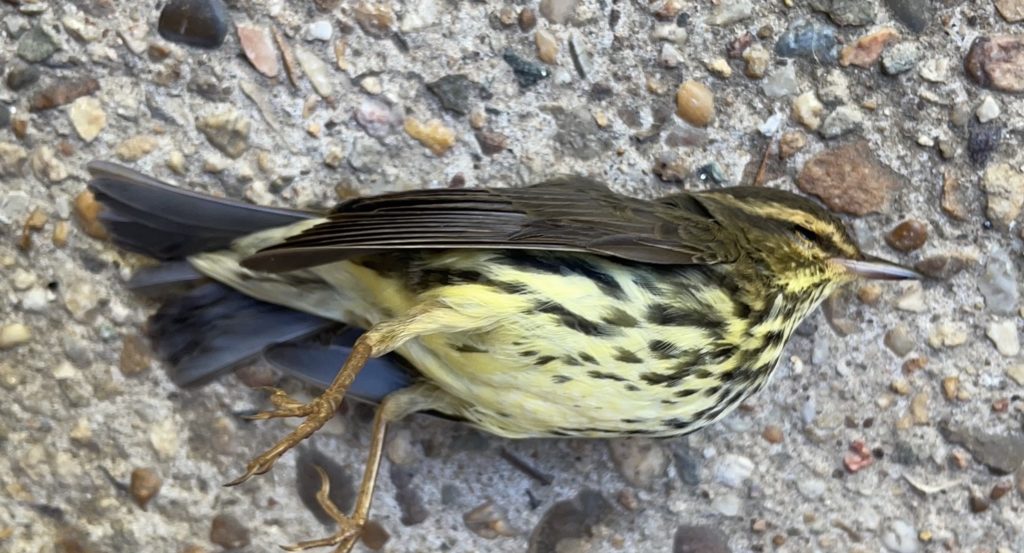
I found this dead northern waterthrush outside our Sanctuary window the morning of September 19. It had likely flown into the window the previous night and broken its neck. This bird typically nests north of Pennsylvania into Canada and winters into Central America. I was aware that tall structures like radio towers and skyscraper buildings caused bird impacts, but I had never thought of our building being a hazard.
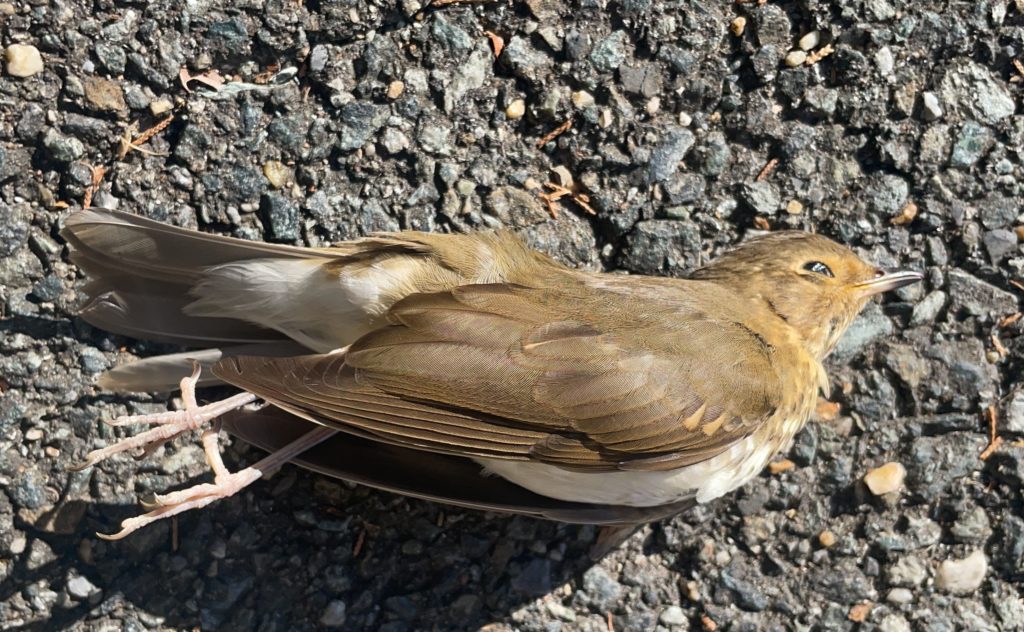
Nine days later, I found this Swainson’s thrush below the bridge. I assume it had flown into the glass the night before. I was really shaken by this one, as this is one of Barbara’s and my favorite birds. While it generally nests in Canada, there are small breeding populations in the highlands of West Virginia, where we heard its ethereal flute-like song in the evenings. I’m now wondering how bad of a bird impact problem we have due to the large, reflective windows of our building. There are likely actions we could take to decrease the likelihood of bird strikes during spring and fall migration seasons.
I believe we at RRUUC are doing many of the right things to support the interdependent web of all creation (of which we are a part); however, there are opportunities for us to do better. Send an email to grounds@rruuc.org if you would like to help.
Joe
